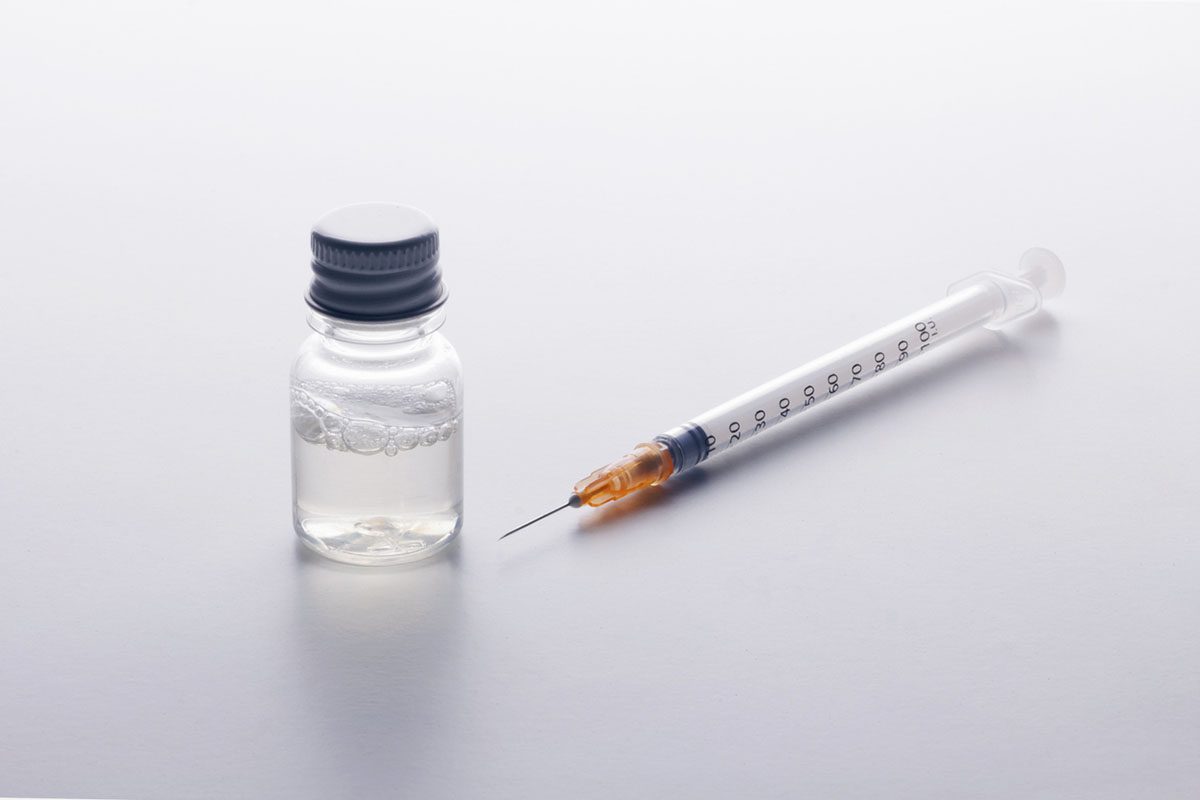Successful Use of Oxazepam in the Treatment of Delirium Tremens
To the Editor: Delirium tremens is a manifestation of alcohol withdrawal syndrome that occurs in about 5% of patients and has a high mortality rate.1 The withdrawal state involves reduced brain γ-aminobutyric acid (GABA) levels and GABA receptor sensitivity and activation of glutamate systems, which leads to neuronal overactivity in the absence of alcohol.2,3 Longer-acting benzodiazepines such as diazepam with active metabolites are preferred over shorter-acting ones for detoxification because they are associated with a lesser chance of recurrent withdrawal.4 Benzodiazepines with a short half-life (eg, oxazepam and lorazepam) have potential benefit for patients with liver disease, which is a common comorbid medical condition in alcohol-dependent individuals. The efficacy and safety of the short-acting benzodiazepine oxazepam in alcohol withdrawal-related delirium are not clear. To our knowledge, this is the only case reported in the literature of the use of oxazepam in the treatment of delirium tremens.
Case report. Mr A, a 42-year-old man, presented to the psychiatric emergency services with a 15-year history of alcohol use. He met DSM-IV-TR criteria for alcohol dependence with a history suggestive of craving, tolerance, salience, loss of control, and withdrawal symptoms for the past 5 years. After being abstinent from alcohol for 4 days, he had developed symptoms characterized by disorientation to time, place, and person; tactile hallucinations; severe tremulousness; and autonomic instability signs.
On the day of admission in July 2010, the patient’s Clinical Institute Withdrawal Assessment for Alcohol, revised (CIWA-Ar)5 score was 42, corresponding to severe withdrawal. Mr A did not have a history of seizures, loss of consciousness, or significant head injury. Neurologic examination revealed no focal deficits, and there were no signs or symptoms suggestive of neuroinfection. Computed tomographic scanning of the brain was normal except for mild cerebral atrophy. Biochemical investigations revealed abnormal liver function values, while the results of other tests including sugar levels, renal function parameters, and electrolyte levels were within normal range. In view of the patient’s liver function values, we started treatment with the shorter-acting benzodiazepine oxazepam 90 mg/d in 3 divided doses of 30 mg each, with the dose tapered every 3 days. With tapering doses of oxazepam, Mr A showed improvement, with reduction of CIWA-Ar score to less than 10 by the fifth day.
In this case, oxazepam, which is a shorter-acting benzodiazepine, was used to treat delirium tremens. Most benzodiazepines have active metabolites, and hence their duration of action seems to exceed their plasma half-life.4 Oxazepam has no cytochrome P450 interactions and no active metabolites. It does not have initial euphoric effects because of its slow resorption, and therefore there is less risk of misuse. The half-life of oxazepam is 4-10 hours, and it has a better therapeutic window compared to other short-acting agents. Oxazepam has been used in the treatment of uncomplicated alcohol withdrawal syndrome.6 Safety data on the use of oxazepam in medical emergencies such as delirium tremens would be of benefit in cases with associated impaired liver functioning. The outcome of this case, as well as the pharmacokinetics of oxazepam, suggests that it may be a good alternative to lorazepam for patients with significant comorbid hepatic illnesses.
References
1. Hamilton R. Goldfrank’s Toxicologic Emergencies. 7th ed. New York, NY: McGraw-Hill; 2002.
2. Trevisan LA, Boutros N, Petrakis IL, et al. Complications of alcohol withdrawal: pathophysiological insights. Alcohol Health Res World. 1998;22(1):61-66. PubMed
3. Tsai G, Gastfriend DR, Coyle JT. The glutamatergic basis of human alcoholism. Am J Psychiatry. 1995;152(3):332-340. PubMed
4. Saitz R, O’ Malley SS. Pharmacotherapies for alcohol abuse: withdrawal and treatment. Med Clin North Am. 1997;81(4):881-907. PubMed doi:10.1016/S0025-7125(05)70554-X
5. Sullivan JT, Sykora K, Schneiderman J, et al. Assessment of alcohol withdrawal: the revised Clinical Institute Withdrawal Assessment for Alcohol scale (CIWA-Ar). Br J Addict. 1989;84(11):1353-1357. PubMed doi:10.1111/j.1360-0443.1989.tb00737.x
6. Buckley NA, Dawson AH, Whyte IM, et al. Relative toxicity of benzodiazepines in overdose. BMJ. 1995;310(6974):219-221. PubMed doi:10.1136/bmj.310.6974.219
Author affiliations: Department of Psychiatry, National Institute of Mental Health and Neurosciences (NIMHANS), Bangalore, India.
Potential conflicts of interest: None reported.
Funding/support: None reported.
Published online: November 8, 2012.
Prim Care Companion CNS Disord 2012;14(6):doi:10.4088/PCC.12l01404
© Copyright 2012 Physicians Postgraduate Press, Inc.




